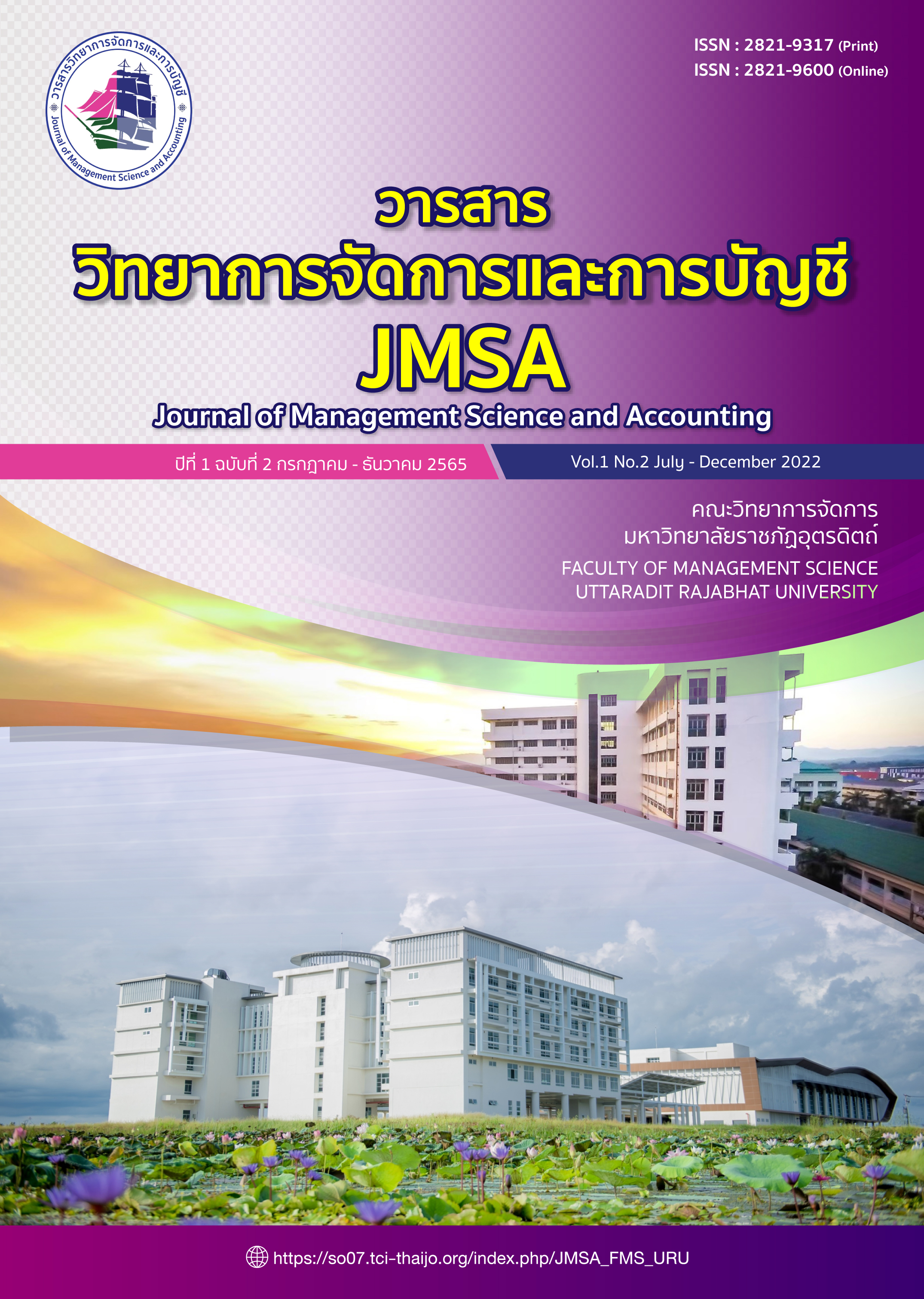Exploring E-service Quality on Customer Satisfaction in the Online Marketplace
Main Article Content
Abstract
This research aims to examine the effect of electronic service quality (e-service quality) on customer satisfaction in the online marketplace in Thailand. This study illustrates how linking the four dimensions of e-service quality: (1) efficiency, (2) system availability, (3) fulfillment, and (4) privacy in the online marketplace can lead to customer satisfaction. Data were collected from 400 buyers who had purchased a product from an online marketplace by questionnaire survey. Spearman's correlation coefficient was conducted to test the hypotheses and to define the direction of relations in this research. The results demonstrate a positive relationship between e-service quality and customer satisfaction. The tests of hypothesized relationships are all accepted which significant value is greater than 0.01. Among the four e-service quality dimensions, efficiency was found to have the strongest relationship with customer satisfaction. However, the level of correlation relationship between efficiency and customer satisfaction was moderate. Furthermore, privacy, system availability, and fulfillment showed a weak correlation relationship with customer satisfaction, respectively. Finally, this research indicates that the online marketplace firms should pay attention to assess their e-service quality for continuous improvement of their service quality in terms of efficiency, privacy, system availability, and fulfillment to enhance their customer satisfaction.
Article Details

This work is licensed under a Creative Commons Attribution-NonCommercial-NoDerivatives 4.0 International License.
Articles published in the Journal of Management Science and Accounting Uttaradit Rajabhat University It is the copyright of Uttaradit Rajabhat University.
Articles published in Journal of Management Science and Accounting Uttaradit Rajabhat University Considered to be the personal opinion of the writer. The editorial board does not have to agree. Authors are responsible for their own articles.
Authors who publish agree to the following terms:
- Authors retain copyright and grant the journal right of first publication with the work simultaneously licensed under a Attribution-NonCommercial-NoDerivatives 4.0 International (CC BY-NC-ND 4.0) that allows others to share the work with an acknowledgment of the work's authorship and initial publication in this journal.
- Authors are able to enter into separate, additional contractual arrangements for the non-exclusive distribution of the journal's published version of the work (e.g., post it to an institutional repository or publish it in a book), with an acknowledgment of its initial publication in this journal.
- Authors are permitted and encouraged to post their work online (e.g., in institutional repositories or on their website) prior to and during the submission process, as it can lead to productive exchanges, as well as earlier and greater citation of published work.
References
Anderson, E.W. & Sullivan M.W., (1993). The Antecedents and Consequences of Customer Satisfaction for Firms. Marketing Science, 12(2), 125-143.
Anderson, R.E., & Srinivasan, S.S., (2003). E-Satisfaction and E-Loyalty: A Contingency Framework. Psychology and Marketing, 20(2), 99-121.
Blanchard, R. and Galloway, R. (1994). Quality in retail banking. International Journal of Service Industry Management, 5(4), 5‐23.
Blanchard, R.F. & Sullivan, M.W. (1993). The antecedents and consequences of customer satisfaction for firms. Marketing Sciwence, 12(2), 125-143.
Bressolles, F. Durrieu. (2011, 9-10 June). Service quality, customer value and satisfaction relationship revisited for online wine websites. 6th AWBR International Conference ,Bordeaux Management School, 1-13.
Fornell, C., (1992). A national customer satisfaction barometer: The Swedish experience. Journal of Marketing, 56(1), 6-21.
Fornell, C., & Larcker, D.F. (1981). Evaluating structural equation models with unobservable variables and measurement error. Journal of Marketing Research, 18(1), 9-50.
Hair J.F., Black, W.C., Babin, B.J., Anderson, R.E., & Tatham, R.L. (2006). Multivariate data analysis. 4th ed.. Prentice Hall.
Liang, T.P., & Lai, H.J. (2002). Effect of store design on consumer purchases: an empirical study of on-line bookstores. Information & Management, 39(6), 431-444.
Nagengast, L., Evanschitzky, H., Blut, M., & Rudolph, T. (2014). New insights in the moderating effect of switching costs on the satisfaction-repurchase behavior link. Journal of Retailing, 90(3), 408-427.
Oliver, R.L. (1997). Satisfaction: A behavioral perspective on the consumer. McGraw-Hill.
Parasuraman, A., Zeithaml, V.A., & Malhotra, A. (2005). E-S-Qual: A multiple-item scale for assessing electronic service quality. Journal of Service Research, 7(3), 213-33.
Rohm, A.J., & Swaminathan, V. (2004). A typology of online shoppers based on shopping motivations. Journal of Business Research, 57(7), 748-757.
Smith, P.R., & Chaffey, D. (2005). eMarketing eXcellence, 2nd ed. Elsevier Butterworth-Heinemann.
Thai Retailers Association. (2018, December 17). Thailand industry outlook: Modern trade. http://www.thairetailer.com/index.php?lay=show& ac=article&Ntype=1
Zar, J.H. (1972). Significance Testing of the Spearman Rank Correlation Coefficient. Journal of the American Statistical Association, 67(339), 578-580.
Zeithaml, V.A. (2002). Service excellence in electronic channels. Managing Service Quality, 12(3), 135-138.


